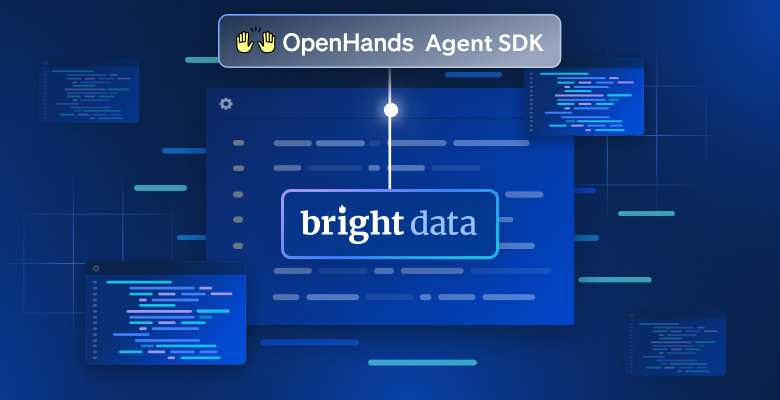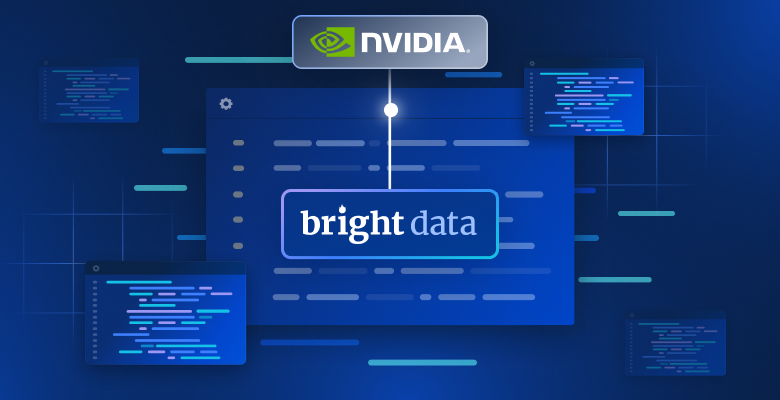In this article, you’ll learn what the various types of B2B data are, how to gather it, and how to use it to fuel your company’s growth.
Types of B2B Data
B2B data is categorized into two groups:
- Internal data is generated within a business (eg transaction, operation, and customer interaction data).
- External data is data sourced from third-party sources or public information about other companies.
This guide will focus on external data. Following are some of the various types of external data:
Firmographics Data
Firmographics data provides high-level information about companies, such as the name, size, funding, headcount, hiring activities, location, industry, and revenue. Companies use it to identify potential clients that fit specific industries and for market research.
Technographics Data
Technographics data gives you insights into the technologies other companies use, including the technology stacks of their employees. It’s used for competitive analysis and sales targeting by tech companies.
People and Contact Data
People and contact data (often referred to as demographic data) is, essentially, data about people. It includes information like names, phone numbers, emails, work history, location, and skills. Sales and marketing teams use this data for lead generation and building of contact lists.
Intent Data
Intent data signals when a company is interested in particular products based on web activity, engagement, or digital behavior. It’s a step up from chronographic data (information relating to events and changes in companies) because intent data is more targeted and easier to act on for marketing teams.
B2B Data Collection
Now that you know about the different kinds of data and how they can help, let’s take a look at the various ways you can collect it. The two primary methods for gathering external B2B data are web scraping and precollected datasets.
Web Scraping
Web scraping lets you use automated tools to grab public information from public websites. It’s one of the most efficient ways to gather real-time B2B information, such as competitor updates, job postings, and customer feedback. As long as you gather data from publicly available websites, avoid scraping personally identifiable information, and comply with the California Consumer Privacy Act (CCPA) and General Data Protection Regulation (GDPR), scraping is completely legal.
To start scraping, you need the right tools. Python offers a rich library ecosystem, making it an ideal choice. Key libraries include requests for sending HTTP requests, Beautiful Soup for parsing HTML and XML, and Selenium for automating interactions with web browsers. While this article doesn’t cover the technical details of building a scraper, you can read this Web Scraping with Python Tutorial if you want to learn more.
Keep in mind that most companies work to prevent data scraping by implementing measures like IP bans, georestrictions, rate limits, and CAPTCHA challenges. For instance, in 2023, X (formerly Twitter) banned any kind of scraping or crawling without prior written consent. In this case, a basic web scraper isn’t enough; you need a web scraper that provides sophisticated web scraping APIs, tools, and proxy servers. A proxy server acts as an intermediary between your computer and the target web pages. It’s like an invisibility cloak that allows the web scraper to bypass rate-limiting systems, location restrictions, and more.
Bright Data provides a proxy-checking tool that tests and verifies proxies, assessing factors like risk, geolocation, and type. To support seamless data collection, they also offer rotating proxies that automatically switch IP addresses, helping avoid detection and helping distribute requests efficiently. Additionally, Bright Data tools, like the Web Unlocker, include CAPTCHA-solving capabilities to bypass common anti-bot defenses, making it easier to maintain access to target sites.
Datasets
Web scraping for B2B data requires a significant amount of effort—you have to set up data infrastructure, invest in software development teams, and maintain the scraper. If your business doesn’t have the resources for this, you could still make use of predefined B2B datasets to get the information you need.
Datasets are collections of data, often in tabular form, such as in a CSV or XLSX file, focused on a specific topic or analysis. Purchasing a data set can be faster and more cost-effective than web scraping, especially for businesses needing to prototype quickly or who lack the technical expertise to manage in-house data collection.
However, keep in mind that acquiring low-quality datasets is costly. Gartner (a tech research and consulting firm) estimates that poor data quality costs organizations an average of $15 million USD per year. Moreover, FirstEigen, a data quality validation and monitoring firm, reports that bad data leads B2B marketers to target the wrong decision-makers nearly 86 percent of the time. To avoid this, choosing reliable providers with a track record of quality is essential. For instance, Bright Data datasets undergo rigorous quality assurance processes to ensure accuracy, reliability, and relevance.
Additionally, they continuously update and refresh the datasets to reflect the latest information, ensuring that users always have access to the most current data.
Web Scraping vs. Prebuilt Datasets
Let’s take a look at some of the pros and cons of building your own web scraping infrastructure vs. using prebuilt datasets so that you can determine which approach is right for you.
Collecting B2B Data Yourself
Building in-house web scraping infrastructure gives you full control of your data collection process. You have complete ownership.
Pros
- You can tweak the scraping process to capture exactly the data you need from specific sources and at your preferred frequency.
- You have direct control over your scraping setup, which allows you to adjust according to business needs as your business grows and evolves.
- You might have high setup costs, but in-house infrastructure becomes more cost-effective over time, especially for businesses with ongoing data needs.
Cons
- You need significant time, technical expertise, and financial investment (to hire specialized developers, set up proxies, and ensure compliance with legal guidelines) to build a web scraping infrastructure.
- You need to regularly update your scraper to ensure it continues to function properly since websites are constantly changing their structures and anti-scraping measures.
Outsourcing B2B Data with Prebuilt Datasets
Purchasing prebuilt datasets offers a fast solution for companies that need reliable data but do not want to spend on the overhead of building infrastructure.
Pros
- Providers like Bright Data offer preprocessed and ready-to-use datasets, allowing you to start data-driven initiatives without delay. With Bright Data, you also get access to a diverse and extensive range of B2B data that might be difficult, if not impossible, to gather independently, such as LinkedIn, Crunchbase, and Indeed datasets.
- The provider handles all the infrastructure, data collection, and updates. Therefore, there’s no need to worry about updating or maintaining a scraping setup.
- Prebuilt datasets can save time and expenses, particularly for short-term or initial data needs.
Cons
- The accuracy and freshness of the data depend entirely on the provider’s quality standards and update schedules.
- The data provided by the third-party source might limit you and might not always align with your specific needs.
Now that you know how you might collect B2B data, let’s take a look at how you can leverage it effectively.
B2B Data Use
Following are a few ways companies can leverage B2B data:
Lead Generation and Ideal Customer Profiles Targeting
B2B data is invaluable for refining lead generation and targeting ideal customer profiles (ICPs). Sales experts use it to enhance strategies, boost lead generation, and increase conversion rates.
For example, a new web app hosting company can leverage technographic data to identify potential customers currently using complementary technologies that would benefit from their software solutions.
Competitive Analysis
If your company operates in the talent acquisition or human resources industry, analyzing review data from sources like Indeed will reveal employee sentiment and highlight potential red flags in competing companies. B2B data enables businesses to monitor data points, such as competitors’ technology stacks, locations, employee count, and product purchases. This helps anticipate competitors’ moves and identify potential areas for growth or disruption.
Account-Based Marketing
Account-based marketing (ABM) is a B2B marketing approach that focuses on specific accounts and their contacts. With demographic data on organizational structure, contact information, and names of decision-makers within targeted companies, sales and marketing teams can craft personalized strategies that resonate with the key targets, increasing the likelihood of engagement and conversion.
Risk and Market Analysis
B2B data provides insight into potential risks and challenges, such as regulatory changes, economic shifts, or technological disruptions. Data points, like company acquisitions, expansions, funding rounds, and changes in top management, signal potential shifts in the ecosystem. Businesses can use this information to make informed decisions about investments, partnerships, and market entry strategies.
These are just some of the most common applications of B2B data. To see how companies successfully use B2B data, check out some of these customer stories from Bright Data.
Conclusion
B2B data is an indispensable asset for optimizing sales and marketing strategies. With firmographic, demographic, technographic, and intent data types, companies can refine lead generation strategies, enhance competitive analysis, and boost operational efficiency.
Whether you decide to build a custom web scraping solution or use precollected datasets, B2B data offers businesses the insights they need to stay competitive in an evolving marketplace.
As a trusted provider of web data solutions, Bright Data offers a range of ready-to-use B2B datasets from sources like Amazon, Walmart, and Twitter. Access to accurate and up-to-date data can equip your business with the insights necessary to make informed decisions, seize growth opportunities, and maintain an edge over competitors.






